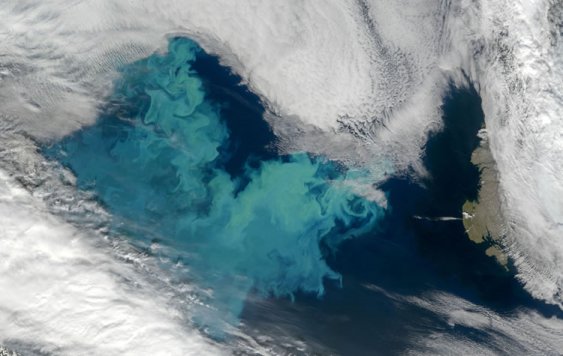|
While this region would seem to be optimal for a satellite
sensor to detect chlorophyll a, phytoplankton also contain
other often taxonomic-specific photoactive pigments such as
chlorophyll b, phycoerythrin, fucoxanthin, and peridinen.
These accessory pigments absorb light at additional wavelengths,
complicating the electromagnetic signal that is radiated from
phytoplankton cells. Other factors such as water turbidity and the
presence of dissolved organic material will also absorb and scatter
light, as will the atmosphere the light passes through, further
confusing the electromagnetic signal that is actually received by
satellites.
For this reason, in practice satellites must sample the level
of energy that is received across several key wavelengths and then
use empirically-established algorithms that quantify the various
relationships to determine the actual chlorophyll levels that are
present. By examining the pattern of light intensity that reaches
the satellite sensor over these wavelengths (that is, the proportion
of light that is being reflected vs. absorbed across the
electromagnetic spectrum), the individual factors responsible for
the pattern can be teased apart - an important one of which is
chlorophyll a.
|
 |